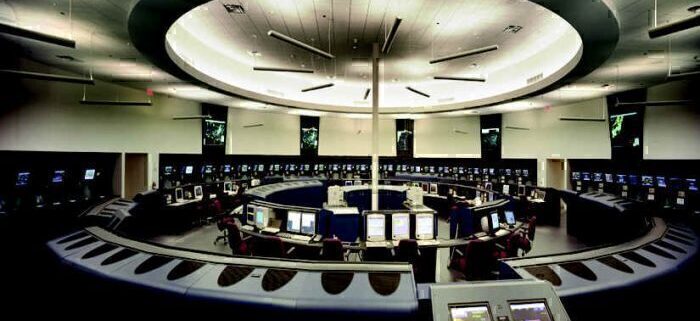How Air Traffic Control Co-Ordinates Arrivals
Busy airports have aircraft landing constantly – more than one a minute at the busiest. How are all these landings controlled? The well-developed solution lies in the passing of aircraft between different air traffic control centers. By the time they arrive for approach at the airport, they should be well planned, spaced, informed and ready to land.
Airborne flights – controlled by several centers
Aircraft are controlled during flight by different centers depending on their location. In the US these are known as Air Route Traffic Control Centers (ARTCC). Names and rules change between countries, but the general principle is the same. As aircraft leave one control center, they will be passed to (and establish contact with) the next one.
These centers will control aircraft on their routes, provide information as needed and ensure minimum separation between aircraft. Smaller aircraft flying under visual flight rules (VFR) can receive closer monitoring and routing assistance.
As their route progresses control is passed from between centers. Controllers ‘hand over’ the aircraft to the next appropriate center and notify the aircraft with the next center and frequency to contact. This process continues until the aircraft is approaching its destination airport.
Stay informed: Sign up for our daily aviation news digest.
Movement near an airport
The airspace close to airports is usually controlled by a separate control facility, often referred to as terminal or approach control. This will handle all departing and arriving flights within a specified zone – usually around 50 to 90 kilometers around the airport, and up to a specified altitude. Close airports may share one such control.
As an arriving aircraft approaches its destination it will be switched to this center which will coordinate approach, spacing, and holding as needed to control flow to the airport.
Within the US these centers are known as terminal radar approach control (TRACON). In the UK, airspace is controlled by the London Area Control Center (LACC) at Swanwick. This provides a single control service to aircraft across a wide area, but internally breaks its control into separate sectors.
For arriving aircraft, terminal control will set aircraft up for approach and then transfer to the appropriate airport control. When leaving terminal control airspace, aircraft will be appropriately spaced and guided to the correct altitude and speed for their approach.
Approach and landing – controlled by the airport tower
Once aircraft begin the approach to the airport they will be passed to the airport control tower. The tower usually controls all aircraft movements on the approach and departure from the airport (within around 9 to 18 kilometers) and on the ground at the airport.
Of course, the tower is usually located at the airport, but this is starting to change. The world’s first remote tower opened in 2019 in Sweden. Scandinavian Mountains Airport will be linked via camera feeds to an ATC center around 350 kilometers away at Sundsvall. As part of a major redevelopment, London City airport will also develop remote tower facilities for control from Swanwick.
Control at the tower, of course, is visual as well as system based. ‘Air control’ will have a view of the active runways and approve landing, take-offs and other movements based on this. They will also maintain the appropriate sequencing and separation already started by approach control. In the event of a missed approach or go-around, aircraft will be returned and re-sequenced either by the tower or approach as necessary for each airport.




